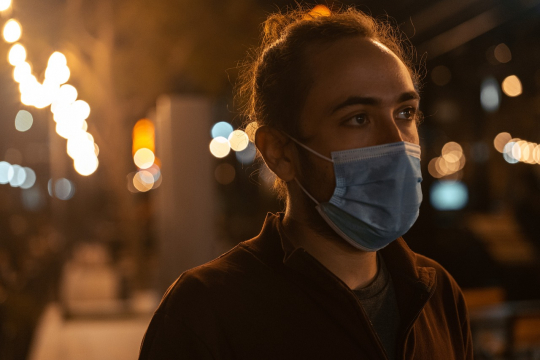This study investigates the association between individuals’ concern about contracting COVID-19 and their compliance with recommended preventive and mitigation measures, namely wearing face masks, maintaining social distancing and handwashing, in the context of the Middle East and North Africa (MENA) region. The empirical analysis is based on a panel dataset from the Combined COVID-19 MENA Monitor Household Survey, which was carried out in Jordan, Morocco, Sudan, Tunisia and Egypt. Applying a probit estimation technique, a positive and statistically significant association was found between the level of COVID-19 worries and individuals’ compliance with the mitigation measures. Notably, the results revealed that this association followed a “first-up-then-down” trend, showing that compliance with the three mitigation measures rose as individuals’ worries about contracting the virus increased, and then markedly decreased after they had been infected. Socio-demographic characteristics contributing to lower levels of compliance included being male, being over 60, having lower levels of education and having a lower household income. A cross-country analysis revealed remarkable differences between the five countries, with the strongest association between COVID-19 concerns and adherence to mitigation measures observed in Tunisia and Sudan, and the weakest association seen in Jordan and Morocco. Policy implications are outlined for effective risk communication and management during disease outbreaks and public health emergencies to encourage appropriate public health behaviours.
COVID-19 risk perception and public compliance with preventive measures: Evidence from a multi-wave household survey in the MENA region
EfD Authors
Country
Sustainable Development Goals
Publication reference
Abu Hatab, A., Krautscheid, L., & Amuakwa-Mensah, F. (2023). COVID-19 risk perception and public compliance with preventive measures: Evidence from a multi-wave household survey in the MENA region. PLOS ONE, 18(7), e0283412. https://doi.org/10.1371/journal.pone.0283412

